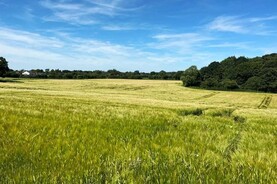While conditions across farms are very variable, with some experiencing some heavy rainfall and others in a moisture stress state, in general, farms are in an OK position and are looking towards building up covers for the last two rounds of grazing.
Farm covers are sitting at 714kg DM/ha for dairy units and 790kg DM/ha for drystock units.
Clean-outs really need to be targeted to have good clean sward heading into the final rounds, as it is difficult enough to achieve good graze-outs in heavy swards without any stem in them.
The build-up will really depend on the farm's ability to graze grass and the stocking rate on farm.
Where there is a low stocking rate or you know the likelihood of staying out with cows into late October or early November is nearly nil, there is little merit in building covers about 850kg to 900kg DM/ha, as these will either go ungrazed and rot over the winter or just end up badly grazed with low utilisation levels and energy intake.
It is all very farm-specific; a wet farm with spur roads and good grazing infrastructure could get away with carrying and grazing a heavy cover better than a dry farm with poor paddock access.
The maximum average farm cover that should be hit is 1,100kg DM/ha and this should only be done on a heavily stocked dry farm.
Potash
With all spring-calving and lambing animals now in the latter stages of lactation (or dried off in the case of sheep), consideration to P and K application should be given to poor-fertility paddocks.
Many farmers (including ourselves on Tullamore Farm) opt away from spreading K in spring due to issues with tetany, but with the heavy rainfall last autumn, applications never left the bag.
With much ground trafficable now, take the opportunity to spread some compounds or muriate of potash.






 This is a subscriber-only article
This is a subscriber-only article










SHARING OPTIONS: